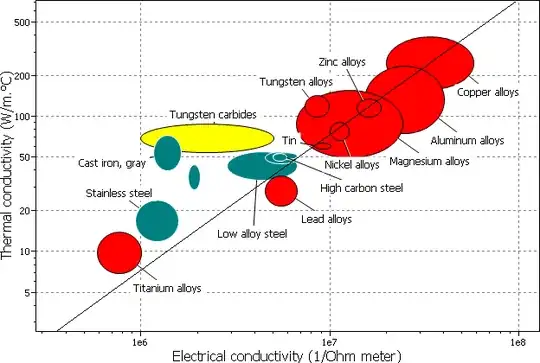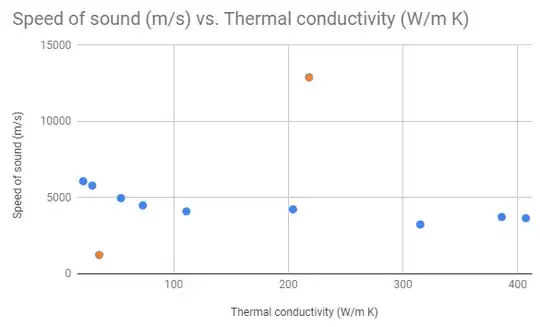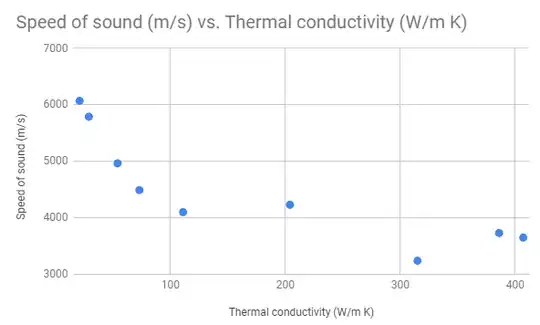Right off the bat I should say: thermal conductivity and electrical conductivity are definitely correlated in metals.
image source: https://www.doitpoms.ac.uk/tlplib/thermal_electrical/printall.php
But my question: is thermal conductivity correlated with speed of sound in metals? It seemed to me like it should be because-- according to highly rated answers to another question-- the speed of sound is like the "speed of information" about macroscopic deformations. So intuitively I expected faster speed of sound in a metal = faster conduction of heat in that same metal.
I used data from Engineering Toolbox's pages Speed of Sound in common Solids and Thermal Conductivity of Metals. The speed of sound dataset was the limiting set, so I was only able to get data on both for 11 metals Aluminum, Beryllium, Brass, Copper, Gold, Iron, Lead, Silver, Steel (low carbon steel), Stainless Steel, and Titanium:
Initially looks like there is no trend. However-- there are two outlier points. Lead and Beryllium are the metals marked in orange instead of blue. The other 9 metals had sound speeds between 3 and 7 thousand m/s. I removed those two from the data:
Here's where I get confused. My assumption was: faster speed of "information" through the metal equals higher thermal conductivity. It looks (to me) like there is a trend and the trend shows the opposite of what I assumed. What am I missing?


